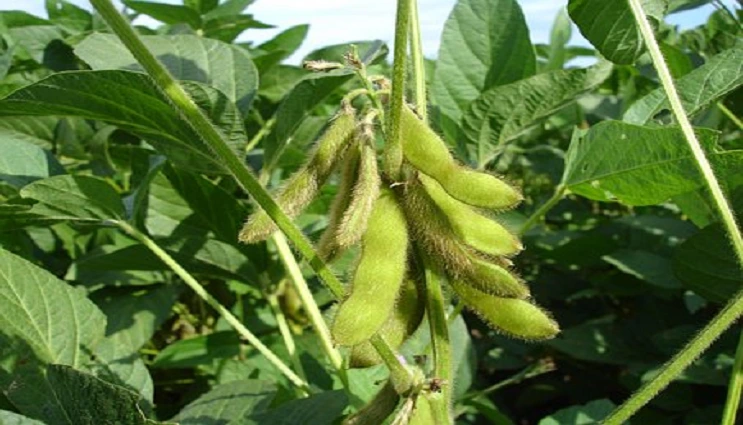Soy foods have been around for centuries, but in recent years, global consumption of these versatile, healthy, and sustainable products has surged.
From traditional Asian staples such as tofu and tempeh to western favorites like soy milk and veggie burgers, soy foods are showing up on dinner plates worldwide.
But why are soy foods becoming so popular?
Here are eight reasons why the global use of soy foods is on the rise. From environmental concerns to health benefits to cost, U.S. Soy articles offer a sustainable and nutritious option that fits into nearly every lifestyle.
Whether you’re looking for a vegan alternative or a way to reduce your meat consumption, adding soy foods to your meals is a great way to impact your diet positively. Let’s dive deep to know why the global use of soy foods is on the rise.
1. Environmental Concerns
Of course, we can’t ignore environmental concerns. The world’s population is expected to reach nine billion by 2050, which means we’ll need to produce as much food in the next 40 years as we did in the last ten years. With a growing population, increasing demand for protein, and a limited supply of fresh water, the health of our environment is in jeopardy.
Environmental concerns are one of the main reasons behind the increased global soy use. Soybeans are one of the most sustainable foods on the planet — they require very little water, have a low carbon footprint, and can be grown in various climates.

Unlike meat production, which hugely impacts the environment, soybeans produce far fewer greenhouse gases and can be cultivated more efficiently with less waste. Soybeans also require less land than other food crops, so they’re an excellent option for growing food in places with scarce arable land.
Soybeans are also a great source of nitrogen, which helps fertilize the soil, and they have been shown to have a lower carbon footprint than other crops. This makes soybeans a great choice to meet the growing demand for protein while protecting the environment.
Additionally, soybeans are a valuable commodity, so that they can create everything from livestock feed to biofuels. Soybeans can make various products, including soy milk, yogurt, tofu, tempeh, edamame, soy sauce and miso, soybean oil, and more. This versatility means they can be used in many different ways, making them a sustainable, affordable, and nutritious alternative to meat.
2. Health Benefits
Beyond the environmental benefits, soybeans have also been shown to provide numerous health benefits, especially for people with certain medical conditions. Soybeans are high in protein, B vitamins, and other essential minerals like iron and zinc.
Moreover, soybeans are a complete protein source containing all the essential amino acids. Amino acids are the building blocks of protein that our body can’t produce on its own. They are necessary for building and repairing tissues in the body, such as muscle, hair, nails, skin, and blood vessels.

With the increased focus on nutrition by consumers, the health benefits of soybeans are often highlighted. They include reducing the risk of heart disease, reducing risks of certain types of cancer such as breast and prostate cancer, lowering cholesterol levels, and improving bone health.
3. Cost-Effectiveness
Cost-effectiveness is always a factor when choosing one product over another. Soybeans are relatively inexpensive to produce and can be grown in various climates, making them a cheaper source of protein than meat. The cost-effectiveness of soybeans is helpful as the world’s population grows and the demand for protein rises.
The low price of soybeans has made soy milk and other products very cost-effective. They’re also incredibly versatile, making them easy to add to most meals. Whether adding soybeans to a stir fry or making tofu at home, they’re one of the most cost-effective ways to incorporate soy into your diet.
4. Versatility
Soybeans are versatile legumes that can be transformed into many different products. They can be used to produce soybean oil, soybean meal, soy sauce, soy flour, soy milk, soy protein, tofu, tempeh, and miso.

Furthermore, soybeans are a major source of oil in the world, accounting for approximately 5% of the world’s total oil production. They are also a significant source of protein, accounting for approximately 40% of the world’s total protein production.
5. High Nutritional Value
Soybeans are legumes and contain high amounts of protein, fiber, vitamins, minerals, and antioxidants. They are also high in iron, calcium, and magnesium and are a good source of zinc and vitamin B6.
Dietary fiber is the part of plants that cannot be broken down during digestion. It is vital for maintaining a healthy gut as it helps with easy digestion and elimination. Protein is essential for the growth and repair of muscles, while calcium, zinc, and magnesium help to support healthy bones.
6. Increasing Demand for Plant-Based Proteins
Global demand for soy foods has increased in recent years as people are reducing their intake of meat-based proteins. There has been a rising focus on reducing one’s intake of red meat largely due to its high saturated fat content.
Animal-based proteins are rich in saturated fats and cholesterol, while most plant-based proteins are low in both. In other words, soybeans and soy foods are healthier alternatives to other protein sources, appealing to those seeking healthier diet options.

7. Convenience
Another reason why the global use of soy foods is on the rise is convenience. Soy foods are incredibly easy to make at home and can be used in various dishes. Soybeans, however, are also widely available in grocery stores in various forms–including soy milk, soy yogurt, and tofu–making it easy to incorporate them into your diet.
Whether you prefer to make soybean-based products at home or buy them pre-made from the store, you’re sure to find a convenient way to incorporate them into your diet.
8. Availability
Another reason the global use of soy foods is rising is availability. Soybeans are grown in various places, making them an accessible source of protein. They’re also extremely versatile and can be used to make a wide variety of different foods.
Soybeans can be found in various forms in grocery stores and other food retailers. They can be used to make various foods, including edamame, soy milk, soy yogurt, tofu, tempeh, and miso. Furthermore, soybean oil can be used to sauté veggies, make salad dressings, or be used in baking.
Conclusion
Soybeans are a sustainable, affordable, and nutritious alternative to meat. They’re packed with protein, vitamins, and minerals and are incredibly easy to add to most dishes. Whether you prefer to make soybean-based products or buy them pre-made, they’re easy to incorporate into most diets. With growing environmental concerns and rising health issues, it’s no surprise global use of soy foods is on the rise. They’re an excellent option for anyone looking to add more sustainable, nutritious, and protein-packed foods to their diet.



![Read more about the article Does Vinegar Kill Termites? [Which one Works Effectively?]](https://bugssolution.com/wp-content/uploads/2021/08/does-vinegar-kill-termites-3-300x169.png)



